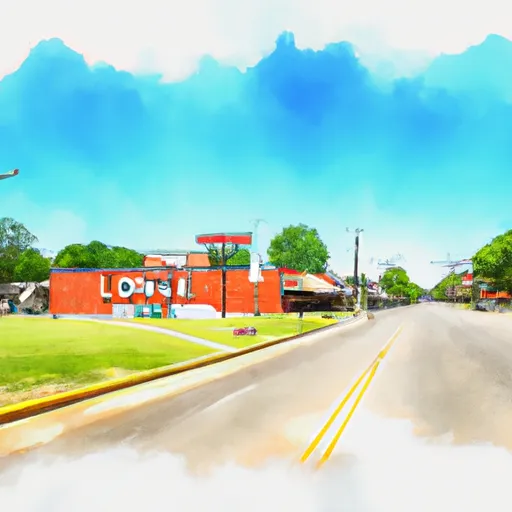-
 Snoflo Premium
Snoflo Premium
Get unlimited access to all our content
With no Ad interruptions! - Start Your Free Trial Login with existing account
Lonoke
Eden Index
Climate
8.0
•
Recreation
2.9
•
Community
2.3
•
Safeguard
4.8/10

Lonoke, Arkansas is a charming town located in Lonoke County. With a humid subtropical climate, Lonoke experiences hot, humid summers and mild, cool winters. Summers are typically sunny with temperatures ranging from the mid-80s to the mid-90s Fahrenheit, while winters see temperatures ranging from the low 30s to the mid-50s Fahrenheit. Precipitation is evenly distributed throughout the year, with an average annual rainfall of around 50 inches.
The town of Lonoke is situated near the Little Rock and Arkansas rivers, offering access to several hydrology constituents. These rivers provide opportunities for boating, fishing, and other water-based activities. Additionally, Lonoke is surrounded by several lakes and reservoirs, such as Lake Pickthorne and Brewer Lake, which offer further recreational opportunities.
Outdoor enthusiasts can explore the abundance of parks and natural areas in and around Lonoke. City parks like Lonoke City Park and Fred B. Moore Park provide picnic areas, playgrounds, and sports facilities. For those seeking more adventure, the nearby Camp Robinson Wildlife Management Area offers hunting, hiking, and wildlife observation opportunities.
Overall, Lonoke, Arkansas offers a pleasant climate, access to beautiful waterways, and a variety of outdoor recreation opportunities for residents and visitors to enjoy.
What is the Eden Index?
The Snoflo Eden Index serves as a comprehensive rating system for regions, evaluating their desirability through a holistic assessment of climate health, outdoor recreation opportunities, and natural disaster risk, acknowledging the profound impact of these factors on livability and well-being.
Climate Health Indicator (CHI): 8.0
Lonoke receives approximately
1268mm of rain per year,
with humidity levels near 84%
and air temperatures averaging around
17°C.
Lonoke has a plant hardyness factor of
8, meaning
plants and agriculture in this region tend to thrive here all year round.
By considering the ideal temperature range, reliable water supplies, clean air, and stable seasonal rain or snowpacks, the Climate Health Indicator (CHI) underscores the significance of a healthy climate as the foundation for quality living.
A healthy climate is paramount for ensuring a high quality of life and livability in a region, fostering both physical well-being and environmental harmony. This can be characterized by ideal temperatures, reliable access to water supplies, clean air, and consistent seasonal rain or snowpacks.
Weather Forecast
Streamflow Conditions
Lower Arkansas
Area Rivers
Lower Arkansas
Snowpack Depths
Lower Arkansas
Reservoir Storage Capacity
Lower Arkansas
Groundwater Levels
Recreational Opportunity Index (ROI): 2.9
The Recreational Opportunity Index (ROI) recognizes the value of outdoor recreational options, such as parks, hiking trails, camping sites, and fishing spots, while acknowledging that climate plays a pivotal role in ensuring the comfort and consistency of these experiences.
Access to outdoor recreational opportunities, encompassing activities such as parks, hiking, camping, and fishing, is crucial for overall well-being, and the climate plays a pivotal role in enabling and enhancing these experiences, ensuring that individuals can engage in nature-based activities comfortably and consistently.
Camping Areas
| Campground | Campsites | Reservations | Toilets | Showers | Elevation |
|---|---|---|---|---|---|
| Saracen Trace RV Park | 52 | 217 ft | |||
| Grand Marais County Park | None | 79 ft | |||
| Rising Star | None | 196 ft | |||
| Chemin - A - Haut State Park | None | 125 ft | |||
| Opelousas City RV Park | 67 | 64 ft | |||
| Crossett RV Park | 119 | 68 ft | |||
| Trulock - Arkansas River | 15 | 195 ft | |||
| Cane Creek State park | None | 257 ft | |||
| Acadiana Park | 75 | 42 ft | |||
| Cypremort Point State Park | None | 3 ft |
Nearby Ski Areas
Catastrophe Safeguard Index (CSI):
The Catastrophe Safeguard Index (CSI) recognizes that natural disaster risk, encompassing floods, fires, hurricanes, and tornadoes, can drastically affect safety and the overall appeal of an area.
The level of natural disaster risk in a region significantly affects safety and the overall livability, with climate change amplifying these risks by potentially increasing the frequency and intensity of events like floods, fires, hurricanes, and tornadoes, thereby posing substantial challenges to community resilience and well-being.
Community Resilience Indicator (CRI): 2.3
The Community Resilience Indicator (CRI) recognizes that education, healthcare, and socioeconomics are crucial to the well-being of a region. The CRI acknowledges the profound impact of these elements on residents' overall quality of life. By evaluating educational resources, healthcare accessibility, and economic inclusivity, the index captures the essential aspects that contribute to a thriving community, fostering resident satisfaction, equity, and social cohesion.

